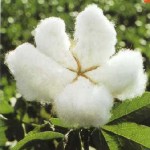
Gary Fitt, CSIRO Entomology
GM cotton was released in 1996, as part of the fight back against Helicoverpa – arguably the most destructive agricultural pest in the world. Bollgard II varieties now make up 90% of the Australian cotton industry. What difference have they made?
Gary Fitt from CSIRO Entomology in Queensland will report that farmers have reduced pesticide use by up to 90% providing on-farm benefits and greatly reducing environmental disruption.
But he will also say that the best results come from good integrated management. Long term success will require mobilization of the whole farm environment and greater understanding of the flows of impacts and services between intensive cropping systems and the surrounding landscape.
Abstract
GARY P. FITT
CSIRO Entomology
Gary.Fitt@csiro.au
120 Meiers Rd, Indooroopilly, Queensland, Australia, 4068
GM cotton, expressing the CryIAc endotoxin was first released in 1996 and were replaced by Bollgard II varieties expressing Cry IAc and Cry 2Ab from 2004/05. These GM varieties occupy 90% of the industry. This paper provides an overview of the implementation process and the impacts in Australia.
Helicoverpa species are the main target for Bt cotton but wider benefits are achieved through the integration of Bt technology into IPM Systems, and with pre-emptive resistance Management to protect the technology.
Pesticide reductions of up to 90% have been achieved with Bollgard II varieties, providing on-farm and benefits and greatly reduced environmental disruption.
Maintaining an appropriate balance and retaining the benefits of Bt cottons requires vigilant resistance management, sustained efforts to enhance beneficial species and non-disruptive, short residual pesticides for key sucking pests. Overall the stability of these systems will require mobilisation of the whole farm environment and greater understanding of the flows of impacts and services between intensive cropping systems and the surrounding landscape.